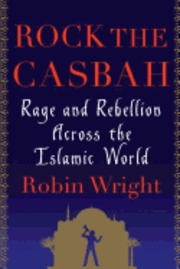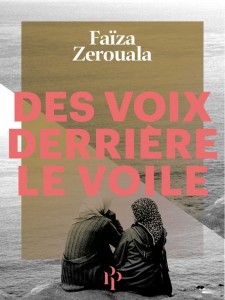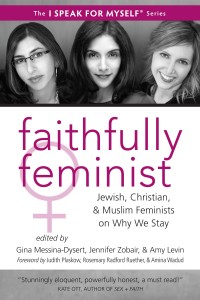Robin Wright’s Rock the Casbah Rage and Rebellion Across the Islamic World describes what Wright calls “the counter-jihad, which is unfolding in the wider Islamic bloc of fifty-seven countries as well as among Muslim minorities worldwide.” A decade after 9/11, Wright argues that “the Islamic world is now in the throes of a counterjihad” which “will define the next decade as thoroughly as the extremists dominated the last one.”
According to Wright, this change is driven by three factors: the demographics of a youthful population, the fact that the majority of the population are now literate, and improved access to technology. Wright cites a 2010 Pew Global Attitudes survey which found that far more people in Muslim countries “identified with modernizers — by two to six times — than with fundamentalists.” Although the reporting for the book was largely conducted before the popular uprisings that have swept the Arab world, Wright takes the recent tumult as a sign that people in the region are rejecting both autocratic regimes and religious extremism.

Setting out to reveal these changing attitudes by examining their cultural manifestations, Wright portrays a generation ”at the vanguard of a sweeping and seductive cultural revolution,” in one reviewer’s words, structuring Rock the Casbah around profiles of poets, playwrights, activists, satellite sheikhs, comedians, and artists who use rap “to lash back at both extremists and autocrats.” In attempting to “show us that Islam can be compatible with modernity and democracy” Wright provides many portraits of Muslim women, many of whom will be familiar to readers of Muslimah Media Watch, such as Saudi feminist Wajeha al Huwaider, Islamic feminist Amina Wadud and “amateur Saudi poet and mother of four” Hissa Hilal, whose poem “The Chaos of Fatwas” was briefly acclaimed for its attack on extremist clerics – tellingly, Hillal, so often labelled a housewife, is in fact a published poet and newspaper editor.
The figure who has been most remarked on in the reviews however, is Dalia Ziada:
“a 29-year-old Egyptian blogger and human rights activist who at the age of 8 underwent female genital mutilation (a practice that, as Wright points out, dates back to the age of the pharaohs in Egypt, long before Islam). Ziada, who is devout and wears the Islamic head scarf, started a blog in 2006 and joined a burgeoning movement nicknamed the “pink hijabis” — observant Muslim women campaigning against domestic violence, female genital mutilation and other social problems rooted in misogynistic interpretations of Islam.”
Wright’s other inspiring examples include clerics who are part of the Saudi government’s de-radicalization program, and the American Muslim comedians who formed the “Axis of Evil” comedy tour. What binds these rather diverse characters together is Wright’s argument that, as she puts it, “The new confrontation is effectively a jihad against the Jihad.” In the small letter jihad/campaign against the venomous big-letter Jihad, the small-letter jihad takes such cool and creative forms as Yussef El Guindi’s post-9/11 comedy Jihad Jones and the Kalashnikov Babes.
Wright asserts that “even as the outside world tried to segregate Muslims as ‘others,’ particularly after 9/11, most Muslims were increasingly trying to integrate into, if not imitate, a globalizing world.” Yet she remarks that the past decade has been marked by fear of “everything from a global clash of civilizations to a new neighborhood mosque.” The roots of Rock the Casbah can be traced back to a well-intentioned effort to provide a reassuring antidote to this fear, an attempt to push readers to relate to Muslims, to get them to think “Oh, they’re just like us.” That is, it is not written with Muslim readers in mind; it is about them, and it is an exercise in reassurance:
“A growing number of Muslims now want to use their faith as a means to an end, rather than an end in itself — or as a way to find answers rather than being the answer itself. For them, Islam is often more about identity than piety, about Muslim values rather than Islamic ideology. Islam is a comfortable space and a legitimate vehicle to search for solutions compatible with global trends; it is no longer about creating an ideal Islamic state or even voting for Islamic parties.”
So, when Wright mentions that this generation wears their hijab with sequins and feathers and even in the flamenco inspired “Spanish Wrap,” what she seems to be saying is: these Muslims are fashion-conscious, hence familiar, hence friendly.
And yet, how reassuring can pink hijab be? As this reviewer makes clear, non-Muslim feminists have “qualms,” and Western observers are wary:
their balancing act between religion and modernity can make Western observers uncomfortable. Her depiction of young Muslim women, “committed to their faith, firm about their femininity, and resolute about their rights,” will spark some qualms in non-Muslim feminists. They may find themselves cynical about the assertion that “hejab is now about liberation, not confinement.”
This passage had me reaching for Madhu Kishwar’s Why I Do Not Call Myself a Feminist and the point that feminism becomes “a tool of cultural imperialism” where Third World women are “expected to be the echo of what are assumed to be more advanced women’s movements in the West.” The idea that Muslim women are at a lower stage of development in their struggle for equality always seems to involve an appeal to a myth of universal sisterhood. The Muslim woman appears to be following in the footsteps of the (Non-Muslim) Feminist Woman who through her journey established a universal pattern which women elsewhere must follow to be truly free. Looking back to the exclusionary inception of feminism as a term designed/defined by white women, Ama Ata Aidoo points out rather acerbically that the women who rioted against the colonial regime in Nigeria in the 1920’s “didn’t seek permission from Woolf.” Adapting this slightly, see Fatima Al-Fihri, Shagrat al-Durr, Wallada bint al-Mustakfi.
The qualms are telling, however: they reveal that the Pink Hijabi/Counter Jihadi remains troubling. Reviewers point to the anecdotal nature of the book, and ask whether these few inspiring individuals are truly representative. The question is inevitable, since Wright’s portraits are presented in an ahistorical vacuum, without reference to the history of reformist movements in their religion and/or region. Instead, they are presented as characters always framed by their faith, engaged not in a clash with other civilizations but ”a struggle within the faith itself to rescue Islam’s central values from a small but virulent minority.”
This claim is familiar – familiar enough that Martin Amis declared it outmoded in his book Second Plane:
Until recently it was being said that what we are confronted with, here, is ‘a civil war’ within Islam. That’s what all this was supposed to be: not a clash of civilisations or anything like that, but a civil war within Islam. Well, the civil war appears to be over. And Islamism won it.
Where Amis claimed the Islamists were winning, Wright claims that “the counter-jihad is the most pivotal trend in the Islamic world.” Yet both are couched equally narrowly. Portraying the whole ”Islamic world” as caught up in either a radicalizing or deradicalizing ”trend” through readings premised on whether this or that represents a step back or forward for “the West” in the “War on Terror” will always be inherently limiting as a premise for understanding 23% of the world’s population.













